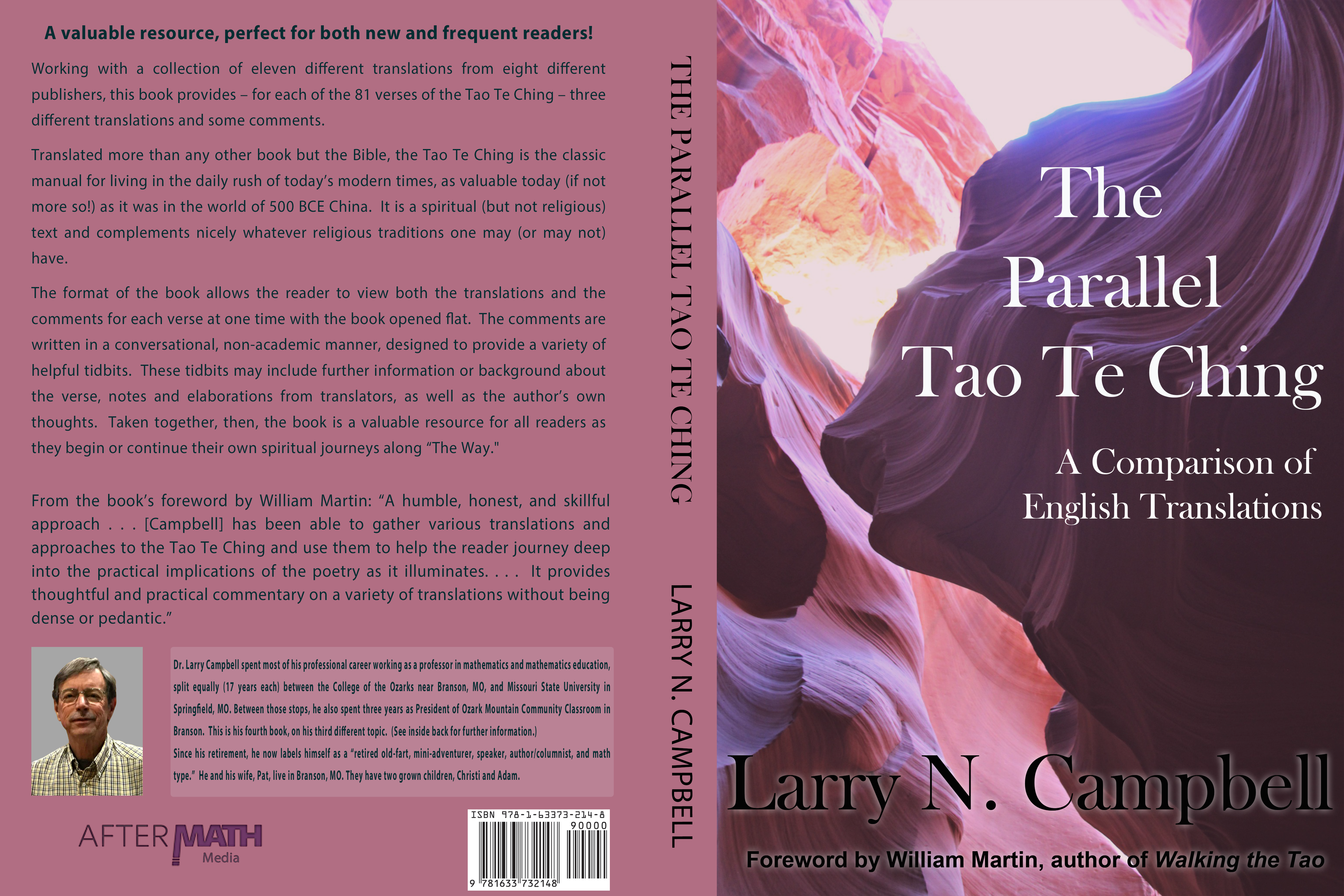
What is the Tao Te Ching?
If you’re not famiiar with this Chinese classic, take a quick look at What is the Tao Te Ching
WHAT? From the Back Cover:
Working with a collection of eleven different translations from eight different publishers, this book provides – for each of the 81 verses of the Tao Te Ching – three different translations and some comments.
Translated more than any other book but the Bible, the Tao Te Ching is the classic manual for living in the daily rush of today’s modern times, as valuable today (if not more so!) as it was in world of 500 BCE China. It is a spiritual (but not religious) text and complements nicely whatever religious traditions one may (or may not) have.
The format of the book allows the reader to view both the translations and the comments for each verse at one time with the book opened flat. The comments are written in a conversational non-academic manner, designed to provide a variety of helpful tidbits. These tidbits may include further information or background about the verse, notes and elaborations from translators, as well as the author’s own thoughts. Taken together, then, the book is a valuable resource for all readers as they begin or continue their own spiritual journeys along “The Way”.
WHY? From the Introduction (mostly):
My own journey into the land of the Tao and the Tao Te Ching started with a little synchronicity here and there, and then developed into curiosity and beyond. On my spiritual journey, I kept running into various circumstances that revealed references to the Tao Te Ching, by Lao Tzu. Presented not as a religious text, but as The WAY of Things, (Stephen Mitchell calls it “the classic manual on the art of living,”) I became intrigued and began moving past curiosity into conscious exploring. Eventually I decided to read a verse a day for a while to get a better feel. it took a while to grow on me, but over time, it began to speak to me.
That was well over a decade ago. Since then, I have become a regular reader, as I find its frequent insights invaluable. Each quarter, I start rereading a verse a day for 81 days. I began using at least two to three translations each time, alternating various translations each return trip, sometimes adding new translations, mixing and matching, and the like. I have used at least twelve to fifteen translations at one time or another.
As might be imagined, then, I have naturally encountered several different—indeed, widely varying—translations of this literary, metaphysical, and spiritual-but-not-religious masterpiece. I have been repeatedly reminded that translations of the Tao Te Ching are as almost as varied as the proverbial pens that write them and the audiences for which they are intended.
What would be most helpful is a resource that parallels a few translations at a time, providing the opportunity for instant comparison between renderings while simultaneously enhancing one’s insights into the individual messages of each chapter and finding translations that speak to the reader.
So, the idea of compiling a resource myself began to slowly and reluctantly creep into my consciousness. (I’m not a Taoist scholar, but I figured I could compile translations.) And, long story short, that resulted in this book.
EARLY REACTION? From the Foreword*:
*Foreword by William Martin, author of Walking the Tao, The Sage’s Tao Te Ching, and more
“ A humble, honest, and skillful approach . . . [Campbell] has been able to gather various translations and approaches to the Tao Te Ching and use them to help the reader journey deep into the practical implications of the poetry as it illuminates. It provides thoughtful and practical commentary on a variety of translations without being dense or pedantic.”

Your new book sounds especially intriguing; congratulations on this accomplishment!
Thanks, Christine! As I mentioned, probably a narrow audience, but I learned a lot working on it. Hope all is well!!
Larry C.
Hi, I’m interested in the Parallel teachings, but I first want to know the names of the different translations.
Thank you!
Hello, Don – I sent you separately an answer to your question, along with more details. Please let me know if you have more questions.